Table of Contents
Overview
In recent years, programmatic advertising has grown in popularity in the digital advertising industry. Programmatic advertising, often known as “programmatic buying,” is powered by a proprietary computerized auction mechanism.
It is a technique that automatically bids for ad spaces in real-time. While this form of advertising is easy for marketers and publishers, it may also be used maliciously, harming a company’s brand and providing a breeding ground for unauthorized access.
Programmatic advertising is a method of automatically purchasing and optimizing digital campaigns rather than buying directly from publishers. Machine learning and AI-optimisation are intended to replace human bargaining. The goal is to improve both the advertiser’s and the publisher’s efficiency and transparency.
This is accomplished through real-time auctions, in which ads are purchased at the same time a visitor loads a website. However, this article will cover the fundamentals of programmatic advertising.
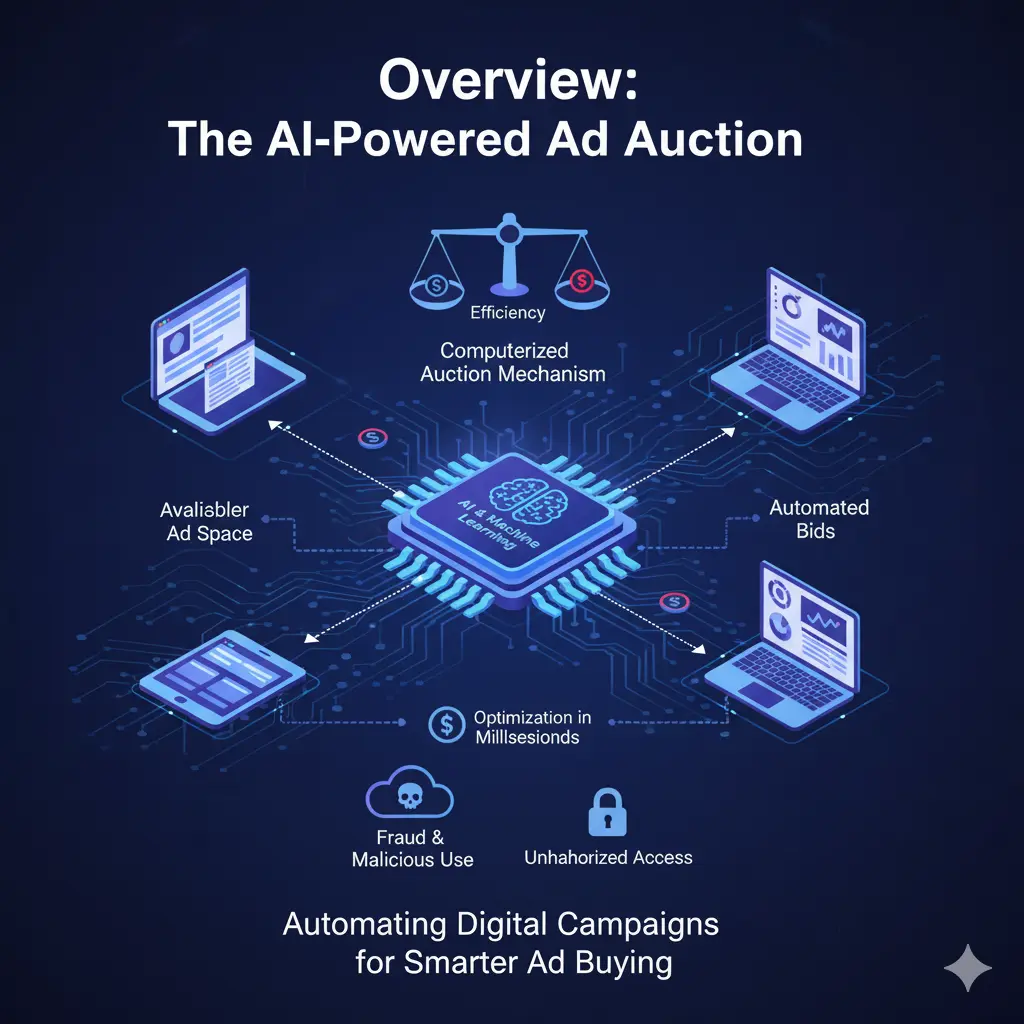
Who Makes Use Of Programmatic?
Programmatic advertising is available through a variety of digital channels, including display, mobile, video, and social.
Traditional offline venues are rapidly transitioning to the digital world.
Out-of-home channels are beginning to advertise programmatically on digital screens in bus stations, retail malls, and billboards.
Previously, programmatic campaigns were reserved for larger budgets and media agencies, but the rapid rise of self-service tools (such as Match2One) provides smaller brands with increased access to the technology and allows them to compete with larger brands without having to go through expensive middlemen.
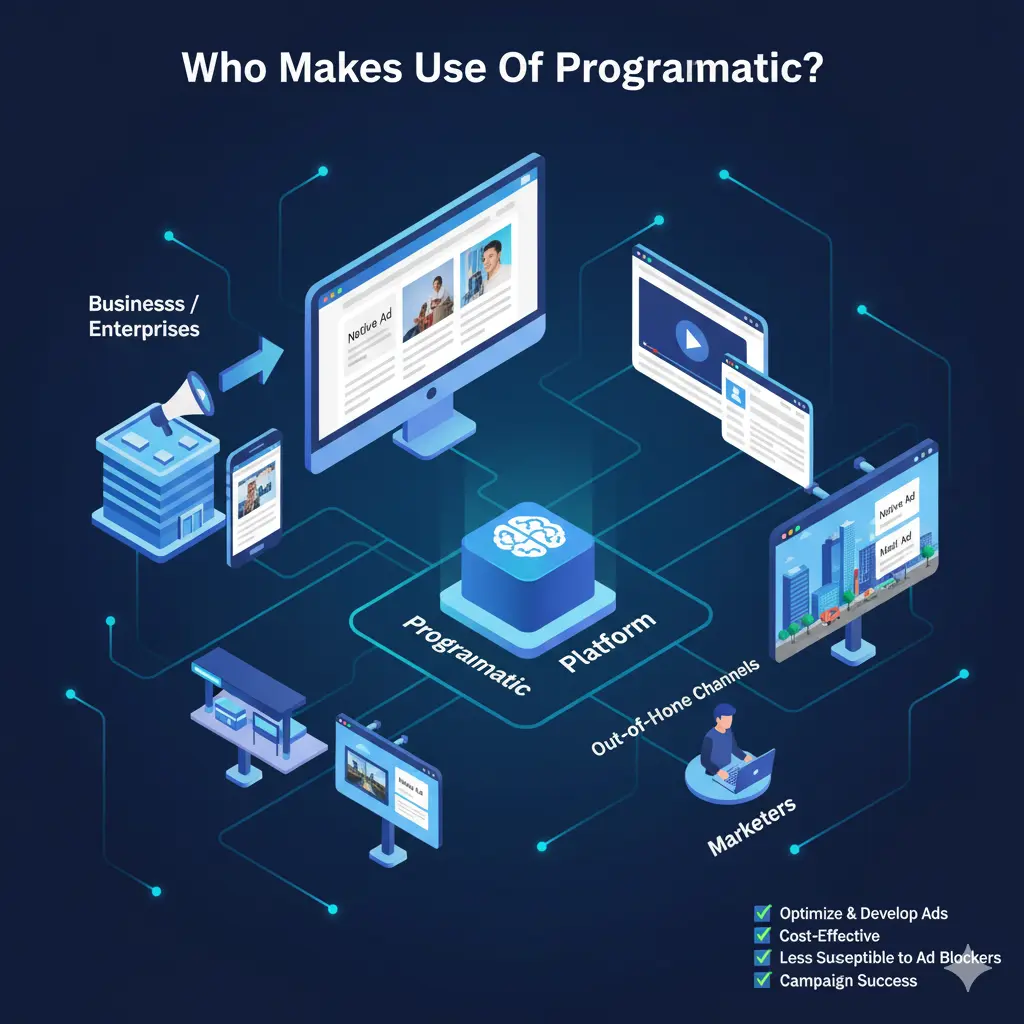
The Definition Of Programmatic Advertising
Programmatic advertising is a digital and mostly automated version of the traditional ad buying and selling procedure. In general, programmatic serves to automate and simplify some portions of the traditional IO procedure.
Programmatic often eliminates the need to contact directly with individual publishers directly, manually generate IOs, submit assets or tags, and deal with billing (especially if purchased through an open ad exchange).
How does it work?
In general, the first phase is when an advertiser creates an ad campaign through a Demand Side Platform (DSP). This enables the advertiser to target specific inventory and audiences.
The DSP will then purchase inventory that matches the advertiser’s specifications through Supply Side Platforms (SSPs) or Exchanges.
The Money Flows Through Each Of These Sites As Follows:
Payment is initiated by the Agency or Advertiser, who pays the DSP for the inventory they wish to target. The DSP then pays the SSP or Exchange as bids on available goods are won. Finally, the SSP compensates the Publisher for winning advertisements that are displayed on the Publisher’s sites.
Why Programmatic Ad-Buying?
Programmatic advertising, on the other hand, gives publishers the advantage of effectively utilizing surplus inventory that advertisers have not yet acquired. To understand why this is so important, we must first grasp the historical context in which it arose.
Direct display advertising initially consisted primarily of simple advertising transactions. Transactions became more sophisticated as the number of websites rose, and advertisements were dispersed through ad networks to prevent additional complications. These ad networks, which connect advertisers with ad-hosting sites, were also confronted with a new issue: excess ad slots.
Programmatic advertising, on the other hand, gives publishers the advantage of effectively utilizing surplus inventory that advertisers have not yet acquired. To understand why this is so important, we must first grasp the historical context in which it arose.
Direct display advertising initially consisted primarily of simple advertising transactions. Transactions became more sophisticated as the number of websites rose, and advertisements were dispersed through ad networks to prevent additional complications. These ad networks, which connect advertisers with ad-hosting sites, were also confronted with a new issue: excess ad slots.
Key Elements
Key elements of the programmatic advertising ecosystem
- SSP
A supply-side platform, or SSP, is a programmatic monetization gateway for publishers that uses automated auctions to sell advertising slots across their websites, mobile apps, or games.
- DSP
A demand-side platform (DSP) is a website that allows businesses, ad networks, and agencies to purchase advertising space from publishers and ad exchanges.
- Ad server
- Ad Server For Publishers
- Advertiser Ad Server
- Ad Network
- Ad Exchange
- Agency trading desk
- DMP
A software platform known as a data management platform (DMP) is used to compile data on the target audience from various sources and channels.
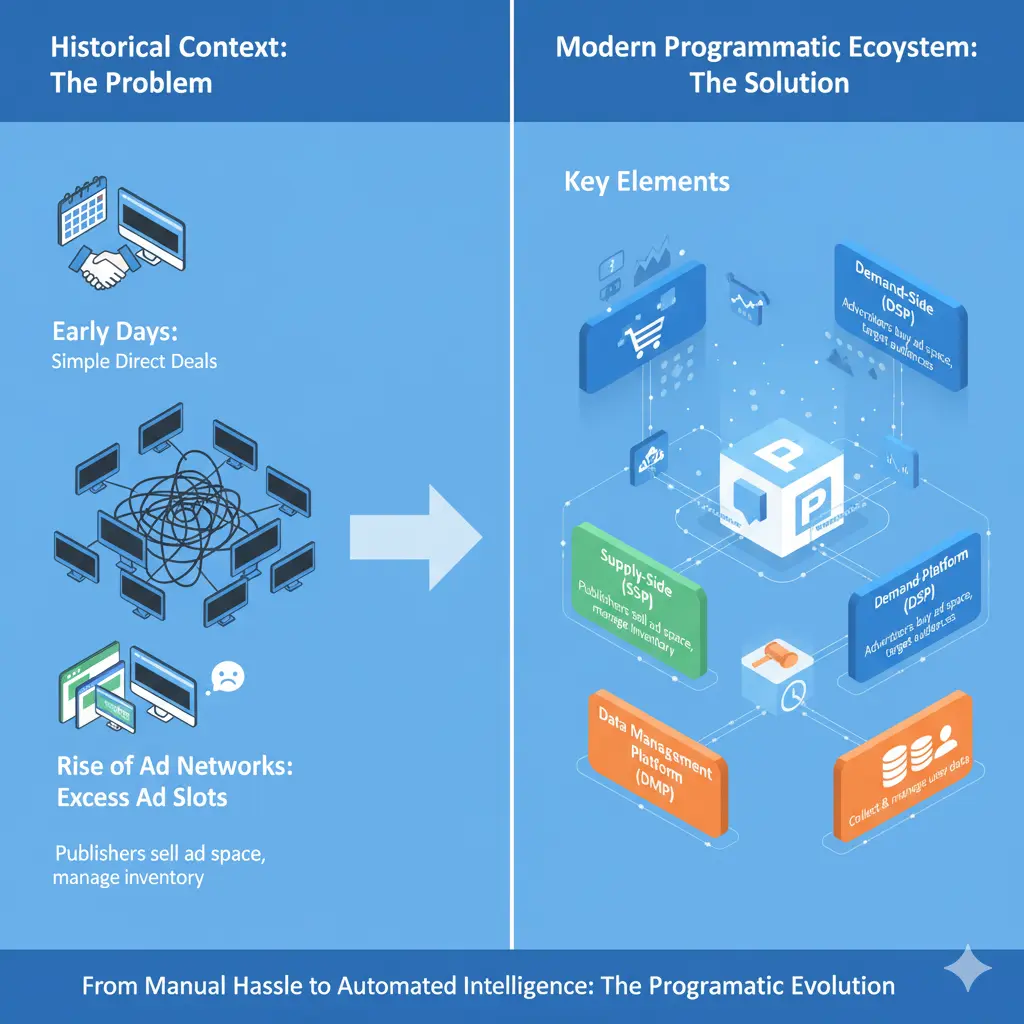
Challenges With Programmatic Advertising
Low-quality web pages can and will be sold to advertisers as long as the site’s viewership statistics are correct. This is just one of the problems with programmatic advertising, and the risk is that one’s brand image will be harmed if their ads appear on these low-quality sites.
Ad fraud is another issue that wastes advertising expenditures. Fraudsters game the ad ecosystem by manipulating ad interactions with users.
Bots always replicate human behaviour and involvement when messing with campaign results. Furthermore, if users’ cookies are not securely safeguarded, their personal information may be disclosed to several third-party websites on the ad exchange.
All of the advancements that programmatic advertising provides come at a cost. Fortunately, we can reduce the risks by closely monitoring our site and ad performance. And, as much as we’d like to do it ourselves, using ad verification technologies is simply more efficient.
The Pros And Cons Of Programmatic Advertising
PRO: Allows businesses to sell ads in larger quantities.
PRO: Small sites with no sales personnel can nonetheless profit from ad exchanges.
PRO: Advertisers can target users based on their consumer demographics and pay for results.
CON: The possibility of fraud in digital advertising is increased by automation.
CON: The industry’s complexity leads to a lack of transparency.
CON: Privacy concerns have led to opposition to third-party cookies.
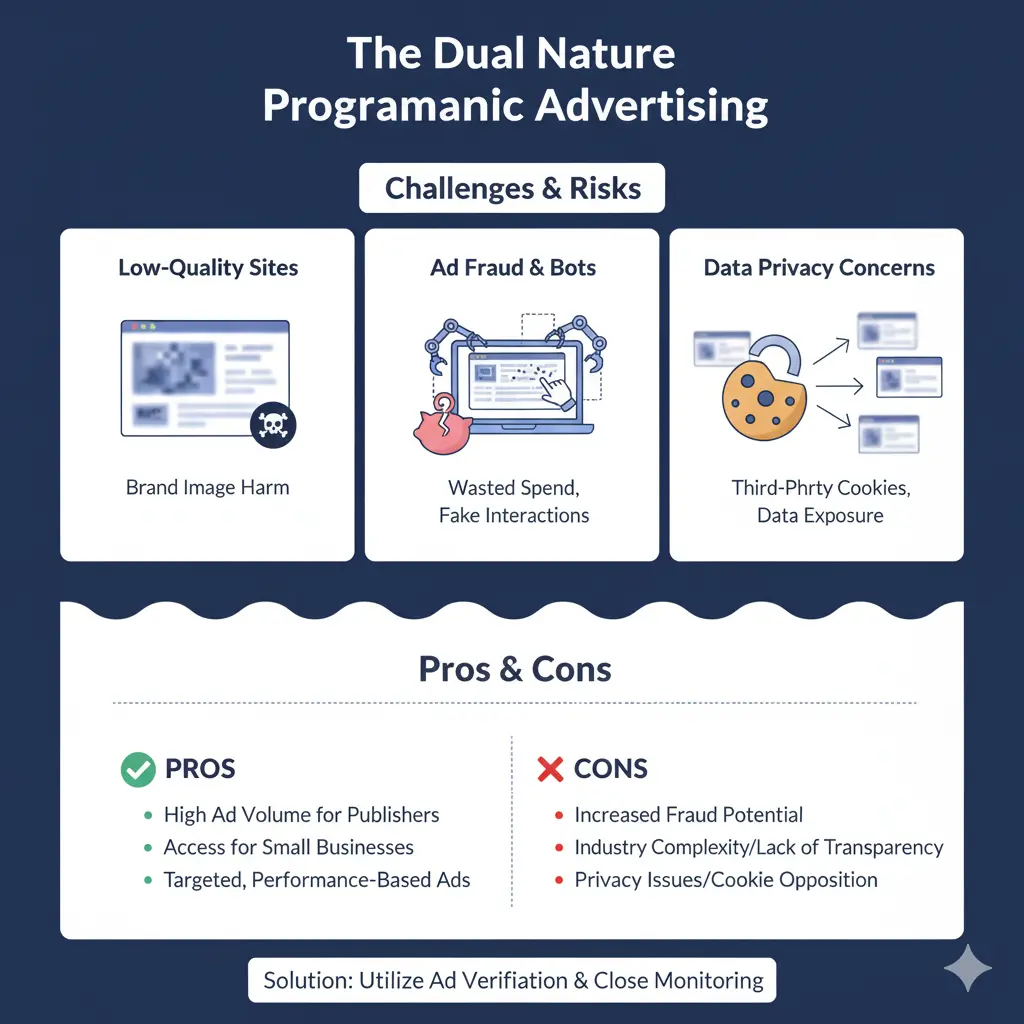
Take Away
As ad management systems, online traffic measurement tools, and ad verification software grow, programmatic advertising has made significant advances in the way The Brisk handles advertising operations on a larger scale.
Advertisers may be confident that they are reaching the right audience, and publishers have a better chance of recouping wasted advertising expenditures.
These are significant milestones in an expanding market, and it is up to us to work for and support a healthy and sustainable advertising ecology.
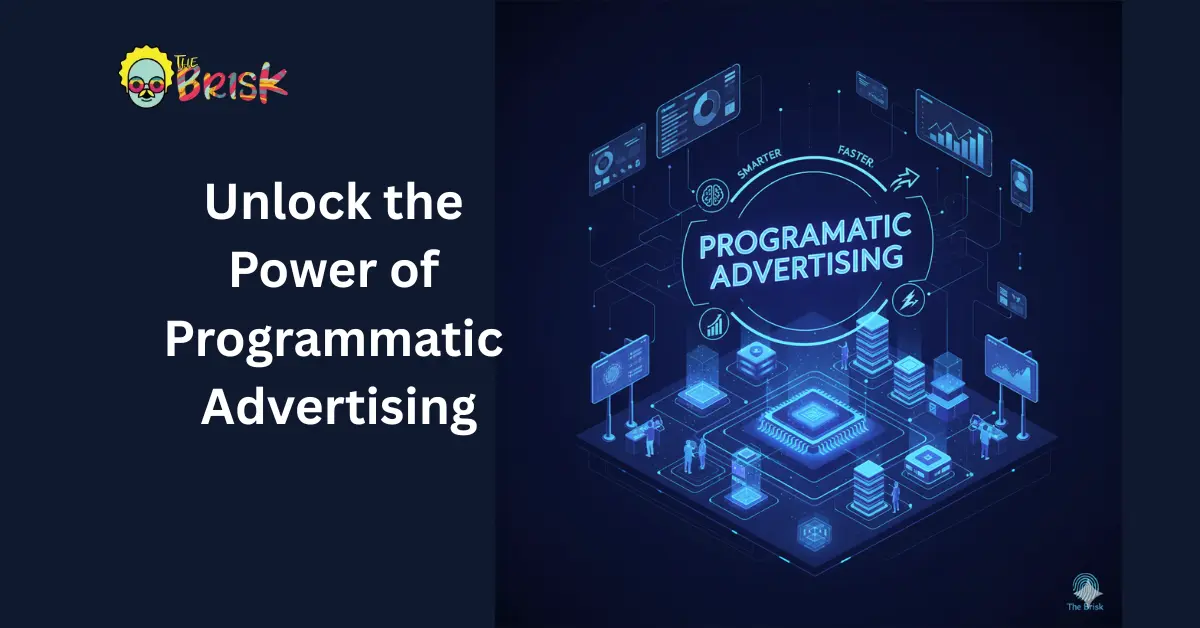



No Comments